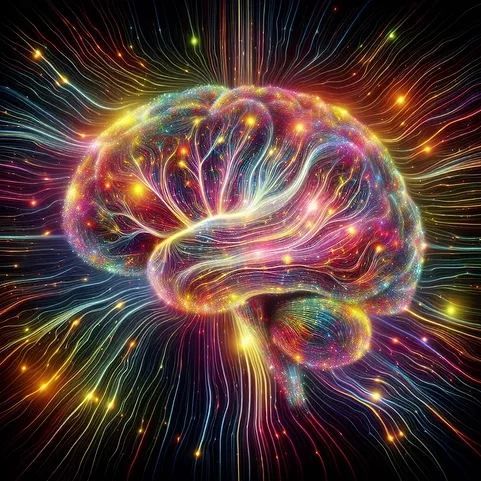Home » Substance Use Disorders Are Under-Recognized in Patients With Diabetes
Substance Use Disorders Are Under-Recognized in Patients With Diabetes
July 1, 2018
From The Carlat Addiction Treatment Report
Rehan Aziz, MD
Dr. Aziz has disclosed that he has no relevant financial or other interests in any commercial companies pertaining to this educational activity.
REVIEW OF: Wu LT et al, Drug and Alcohol Dep 2018;186:86–93
Type 2 diabetes (T2D) is a common condition with high treatment costs and significant morbidity and mortality. In 2015, an estimated 30.2 million American adults had T2D. Diabetes can be comorbid with other behavioral health disorders (BHDs), and this can lead to additional costs and increased morbidity and mortality risk.
Both T2D and BHDs are linked to more emergency department visits and hospital readmissions, and they are in the top diagnoses for adults who are “super-utilizers” of hospital care. However, comorbid BHD and T2D, especially with substance use disorders (SUDs), remain under-recognized and undertreated.
This study used a risk algorithm developed from Duke University Health System electronic health records to identify high-risk patients and examine the prevalence and correlates of BHDs in T2D. Risk scores were based on serious outcomes, such as hospital/ED admission or death. The final analysis included 263 adults with T2D seen at Duke from 2012 to 2016. The sample mean age was 54.6 years, and 54% were women.
Almost half (48%) of patients with T2D also had a SUD, and 75% also had BHDs. Overall, 82% of the sample had a SUD or BHD, with 41% having both.
In the SUD group, 13% were related to alcohol, 39% were due to tobacco, and 23% were due to any drug. In the BHD group, 53% were related to mood disorders, 37% to sleep, 33% to anxiety, 15% to schizophrenia/psychosis/delusion, 14% to dementia/delirium/amnestic/cognitive impairment, and 9% to adjustment.
Greater odds of a comorbid SUD were noted among men and those who were never married. Women had higher odds of mood (2.5) and anxiety disorders (5.5). Having a diagnosis of SUD/BHD was positively associated with greater numbers of ED/inpatient encounters, with ratios ranging from 2.1 for sleep disorders to 6.7 for the presence of ≥ 2 SUDs.
CATR’s Take
This study provides evidence that there is a high rate of SUD/BHD comorbid with T2D. These comorbidities can compromise treatment adherence, exacerbate medical complications, and increase health care utilization and costs. Hopefully, this report will help inform screening and multidisciplinary care coordination efforts for this population.
Addiction TreatmentType 2 diabetes (T2D) is a common condition with high treatment costs and significant morbidity and mortality. In 2015, an estimated 30.2 million American adults had T2D. Diabetes can be comorbid with other behavioral health disorders (BHDs), and this can lead to additional costs and increased morbidity and mortality risk.
Both T2D and BHDs are linked to more emergency department visits and hospital readmissions, and they are in the top diagnoses for adults who are “super-utilizers” of hospital care. However, comorbid BHD and T2D, especially with substance use disorders (SUDs), remain under-recognized and undertreated.
This study used a risk algorithm developed from Duke University Health System electronic health records to identify high-risk patients and examine the prevalence and correlates of BHDs in T2D. Risk scores were based on serious outcomes, such as hospital/ED admission or death. The final analysis included 263 adults with T2D seen at Duke from 2012 to 2016. The sample mean age was 54.6 years, and 54% were women.
Almost half (48%) of patients with T2D also had a SUD, and 75% also had BHDs. Overall, 82% of the sample had a SUD or BHD, with 41% having both.
In the SUD group, 13% were related to alcohol, 39% were due to tobacco, and 23% were due to any drug. In the BHD group, 53% were related to mood disorders, 37% to sleep, 33% to anxiety, 15% to schizophrenia/psychosis/delusion, 14% to dementia/delirium/amnestic/cognitive impairment, and 9% to adjustment.
Greater odds of a comorbid SUD were noted among men and those who were never married. Women had higher odds of mood (2.5) and anxiety disorders (5.5). Having a diagnosis of SUD/BHD was positively associated with greater numbers of ED/inpatient encounters, with ratios ranging from 2.1 for sleep disorders to 6.7 for the presence of ≥ 2 SUDs.
CATR’s Take
This study provides evidence that there is a high rate of SUD/BHD comorbid with T2D. These comorbidities can compromise treatment adherence, exacerbate medical complications, and increase health care utilization and costs. Hopefully, this report will help inform screening and multidisciplinary care coordination efforts for this population.
KEYWORDS research-update

Issue Date: July 1, 2018
Table Of Contents
Recommended
Newsletters
Please see our Terms and Conditions, Privacy Policy, Subscription Agreement, Use of Cookies, and Hardware/Software Requirements to view our website.
© 2025 Carlat Publishing, LLC and Affiliates, All Rights Reserved.


_-The-Breakthrough-Antipsychotic-That-Could-Change-Everything.webp?t=1729528747)



